Ships for the third world war
1962 year, the Caribbean crisis. One of the consequences was the shipbuilding program McNamara's Folly. In honor of the head of the Pentagon, superbusinessman and (later) the head of the World Bank, Robert McNamara.
In the midst of tension and the threat of a new world war, McNamara suddenly decided that the fleet no longer require nuclear carriers. And missile cruisers also do not need much.
Instead of powerful warships, the offspring of the nuclear-nuclear era, McNamara approved the construction of a series of rather strange uses. After reviewing the technical assignment and realizing that these ships would become the basis of the Navy in the coming world war, the sailors came to a real bewilderment.
The 46 series of ships is known as the Knox class frigates. The main feature is the inability to use the squadrons and aircraft carrier groups. Too weak dynamics and speed in 27 nodes did not allow frigates to accompany warships.
The only propeller shaft, one turbine - in combat stability, the Knox did not meet any of the accepted military standards.
Radar detection devices also did not match the time. The two-dimensional SPS-40 general detection radar even by 60's standards seemed a complete anachronism. The radar was assembled on radio tubes, was distinguished by indecently high sensitivity to vibrations and therefore low reliability.
Even less such a frigate was suitable for participation in local conflicts. No “colonial cruiser in Zanzibar” could have come out of it. If Knox attempted to declare itself, any rebels and rebels would have poured it to the fullest.
The frigate lacked strike and anti-aircraft weapons. And the very first air threat was his last - Knox could be bombed as a training target, without any consequences for the attacking side.
Later, in the 70-ies, part of the frigates received a short-range “SiSperrouv” air defense system, with manual guidance through the viewfinder, which was more an ornament than a real weapons. Due to the lack of high-quality radar facilities, the crew of the Knox would hardly have managed to play a combat alarm.
The Knox had neither speedboats nor a capture group on board. They were not intended for capturing pirates and operating in coastal waters. There was not even a helicopter - initially the project only provided for an anti-submarine drone of the DASH type.
At the same time, the frigates were not an ersatz project, a remake of the old trawler “with more money, cheaper at the price”.
The Knoxes had a total displacement of 4200 tons, a crew of 250 people, and their cost at current prices would be 500-600 million.
Full combat, but very highly specialized ships.
Created for only one theater of war, under the same conditions and one chosen enemy.
The hull of the frigate was as if built around a “drop” of the sonar with a range of submarine detection in active mode to 60 km. The armament was based on anti-submarine missiles equipped with warheads in the form of self-guided torpedoes. And the shock drone, which allowed the submarines to attack at a distance significantly greater than the distance of the torpedo attack, which seemed very cool by the standards of the 60-s.
The hydroacoustic station AN / SQS-26 was so successful that it is still installed on destroyers of the Orly Burk class; the difference between the GAS of the Knox frigate and the modern GAS SQS-53 lies in the digitization of the signal and the new interface (Mk.116). But it is based on the same antenna.
To increase the chances of a deadly duel, the Knox creators equipped the frigate with Praire / Masker acoustic masking systems. Four perforated lines encircling the hull in the area of the engine room - to supply low-pressure air to the bottom of the frigate. Bubble curtain reduces noise.
The technical appearance of "Knox" ahead of time. But, despite the better than anyone else, the capabilities of the PLO, the frigate was not designed to act as part of the naval forces.
Then for what purpose did you need a large series of low-speed (and very expensive) anti-submarine ships?
To accompany civil courts. Otherwise - provide convoys. This is clearly confirmed by the primary Knox classification - DE (destroyer escort).
Then the next question is where did the Yankees intend to equip convoys in the coming world war?
Obviously, to Europe. In Rotterdam and other major ports.
It remains to find out - why convoys in world warif everything ends an hour after it starts?
“It’s not over,” grumbled McNamara, “who decided that the war would be nuclear?”
* * *
This is not often said, but there is such an opinion: in the “hour X” no one dares to press a button. World War have to wage conventional weapons.
Unlike the shouting “bahn! the whole world is in dust! ”, for those who have the“ red button ”in their hands, they have something to lose. At once, digging into the ground one’s status, privileges, way of life, and even depriving oneself of life for the sake of ... These people are used to making decisions in a more balanced and thoughtful way.
The use of nuclear weapons is like undermining a grenade in hand-to-hand combat. Nuclear parity (guaranteed mutual destruction) does not allow to use nuclear weapons with impunity and deprives all advantages of the one who decides to use it first.
A military confrontation between superpowers, which began on any occasion, most likely would not have been able to go beyond the level of conventional, non-nuclear weapons.
The superpowers once approached the “danger line” in 1962, not realizing that nuclear parity was established between them. And realizing this, they immediately surrendered, reflecting on the more traditional methods of war.
In addition to re-equipping the Armed Forces with outlandish weapons, McNamara proceeded with a sharp increase in the number of personnel. Prior to his resignation in 1968, he managed to increase by one and a half times the size of the US military from 2,48 to 3,55 million. The Madness of McNamara was a set of measures to prepare for a conventional war.
A small problem for the Americans traditionally was the transfer of reinforcements and the supply of expeditionary forces in the Old World. The personnel could be quickly transferred by air, but for the delivery of heavy equipment, fuel and food needed sea transport.
Navy in this war the decisive role was to secure the escort of convoys through the troubled waters of the Atlantic.
* * *
The naval war with the USSR would be the first conflict of this kind in stories. When one of the parties is completely independent of sea communications, and its fleet is forced to smash sea communications in the rear of the enemy, getting there through five seas and two oceans.
The situation confused all the maps and minds in the US Navy General Staff.
All concepts of the application of the Navy and the conclusions formed in the first half of the twentieth century according to the results of rivalry with the maritime powers (primarily Japan) in this situation were not suitable.
The USSR was independent of the sea routes, it had nowhere and there was no need to lead convoys in open sea areas. He practically had no surface fleet - against the background of the number of naval forces of the Anglo-Saxon countries. Someone seriously believes that the BOD Ave 61 or RKR Ave 58 could break through somewhere and noticeably affect the situation, in conditions of the absolute superiority of the enemy at sea and in the air.
Next - pure geography.
The ability of the US Navy to attack Kamchatka with impunity did not correspond to any of the real tasks and did not contain a single drop of practical meaning. All prepared lines of defense of AUG became useless. For purely geographical reasons there was not a single important and necessary task for large warships in the war against the USSR. Just as there could be no tasks for missile cruisers, which in the 60-s. have not yet had "Tomahawks."
Only the Anglo-Saxons had maritime communications. On which transports with military cargoes for European theaters would move.
There is no doubt that these sea routes would be the object of close attention from the Soviet submarine fleet. The Pentagon realized the danger and launched a specialized convoy ship in a series.
* * *
The Yankees were not so naive, hoping that the 46 "Knox" and 19 similar to the destination frigates "Brook" will be able to keep the defense against dozens of nuclear submarines.
To help frigates from the reserve, 127 destroyers of the Second World War era were extracted. Their outdated artillery weapons were dismantled, in return, the ships received anti-submarine weapons of a new generation. In terms of their capabilities, the PLO units were a weak similarity to the Knox frigates, but the numbers partly compensated for their quality. The shots of the rocket torpedo ASROK on any source of noise under water - what was required in the coming war.
Also you should not take away the fleets of the allies, because of the unfortunate financial condition, often unable to build anything larger than escort frigates. For example, the Navantia shipyard built under license five modified Knox frigates for the Spanish Navy.
As for the frigate "Knox", then, as noted above, it was a fairly large ship, the size of the destroyers 60-s, with the hull length 134 meter and full displacement 4200 tons. The latest project of the US Navy with a boiler-turbine power plant.
The architecture of the hull and add-ons was typical of foreign military shipbuilding of that era. Smooth-deck ship, with angular shapes, transom stern and distinctive mast pipe.
Two fuel oil boilers, single turbine, 35 000 HP Power supply system based on three turbogenerators grouped in one compartment. When they were damaged or steam was lost, the frigate became virtually defenseless: the power of a single backup diesel generator was not enough to control the weapon.
"Combat stability" was not given importance because of the appointment of the frigate. The only threat was the torpedoes of the Soviet submarines, and there was no anti-torpedo defense capable of rescuing a 4000-ton ship with a contactless undermining of 300 kg of explosives under the keel.
The problem was always not to sink, but to get there. The task of the submarine was to go unnoticed and attack the convoy before it was destroyed by the “hunters”.
The full composition of the Knox’s weapons was as follows:
- launcher RUR-5 ASROK (Anti-Subrarine ROCket) with 8 guides and ammunition from 16 rocket gun. The task is the supersonic delivery of self-guided torpedoes to a distance of 9 km (most of the time it was a parachute drop).
- two built-in 324 mm TA for the protection of the near zone.
- Hangar and landing pad for unmanned helicopter Gyrodyne QH-50 DASH with ammunition from two self-guided torpedoes.
- One 127 mm gun mount, installed just in case. Artillery duels were strictly contraindicated to the frigate, and the clumsy five-inch Mk.42 was inferior in terms of anti-aircraft qualities to rifles.
However, the priority of anti-aircraft weapons was in 7th place, immediately after the cost of operating the frigate. The threat from the Soviet aviation for convoys in the Atlantic, no one took it seriously.
Bombers and missile carriers had no chance to reach the line of attack. To do this, they would have to fly over the whole of Europe or the Norwegian / North Sea, while they spent hours in the zone of action of fighters from dozens of airfields of NATO countries.
As for the submarines with anti-ship missiles, this threat also seemed unrealistic. And it remained so for a long time. As in view of the imperfections of the RCC themselves and a small number of underwater carriers, and the lack of targeting in the open ocean.
* * *
Frigates were built. But world war did not happen. The entire subsequent history of the Knoxes was an attempt to adapt highly specialized ships to the unpredictable conditions of the Cold War. And learn to apply them where they never planned.
In the course of their service, the majority of the ships received the SiSperrow air defense missile system, which were later replaced with the Falans ZAK.
The anti-submarine drone turned out to be an interesting, but completely impractical idea, ahead of its time. After a short period of operation and regular accidents due to the failure of the control system, the survivors of the 755 built drones transferred to Vietnam, and partly transferred to the Japanese Navy. Instead, a full-fledged anti-submarine helicopter SH-2 SeaSprite appeared on the frigates.
All frigates were excluded from the Navy in the 90-ies. and mostly transferred to the allies. Currently, their operation continues in the naval forces of seven states.
Knox remains a unique Cold War project.
His peers, the TCRS 1135 "Petrel", came out completely different from the American "hunter for submarines." In terms of their construction and composition of weapons, the Petrels were typical guard ships, for the protection of maritime borders and the protection of state interests. "Anti-submarine" specialization took place, but was not as pronounced as that of the Knox.
The subsequent project of the frigates "Oliver Perry" also had a wider purpose. It was created as a cheap means to be present in many areas of the world's oceans. And it turned out quite unsuccessful - an attempt to combine strike, anti-submarine, anti-aircraft and aviation weapons in the 4000 hull of tons caused the ship to fail to perform any of the tasks. The technological level of the last century made the idea of creating a universal frigate unpromising. Perry themselves suffered offensive losses in local conflicts. Then the Yankees got too much money, and the compromises are gone. The modern US Navy in any situation uses the large and universal destroyers "Orly Burk".
* * *
In hell, McNamara hotly argued with Grand Admiral Doenitz. And McNamara argued that the excellent organization and technical level of the US Navy would keep the defense. Doenitz did not agree, in his opinion, the exceptional fighting qualities of submarine nuclear-powered submarines would guarantee the defeat of the convoys.
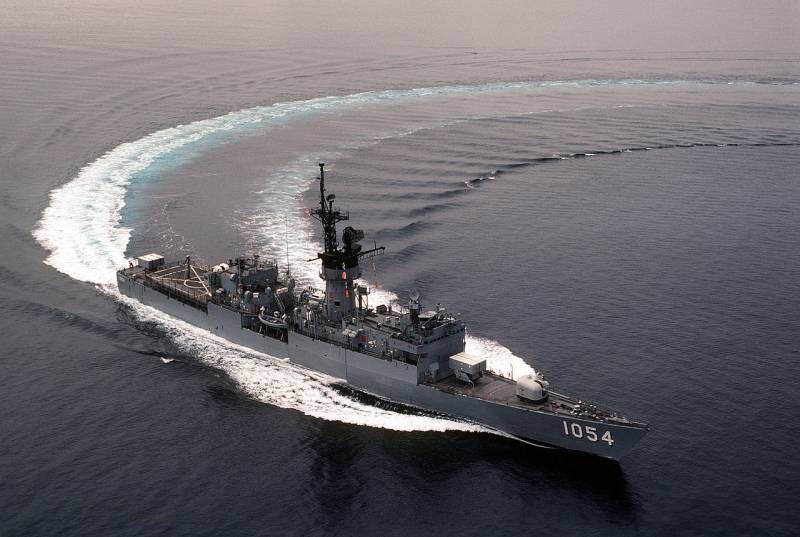
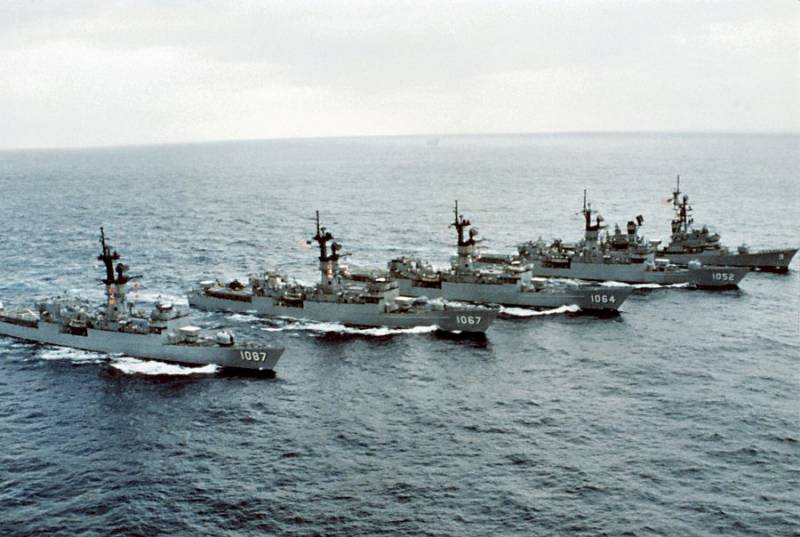
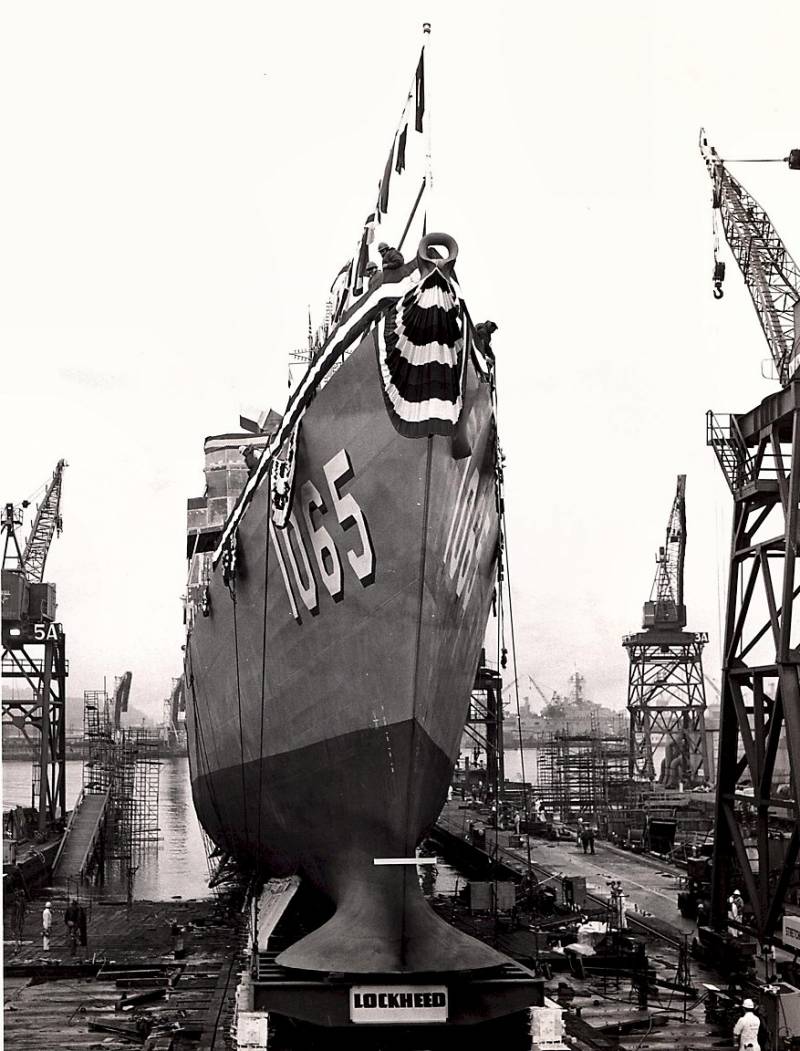
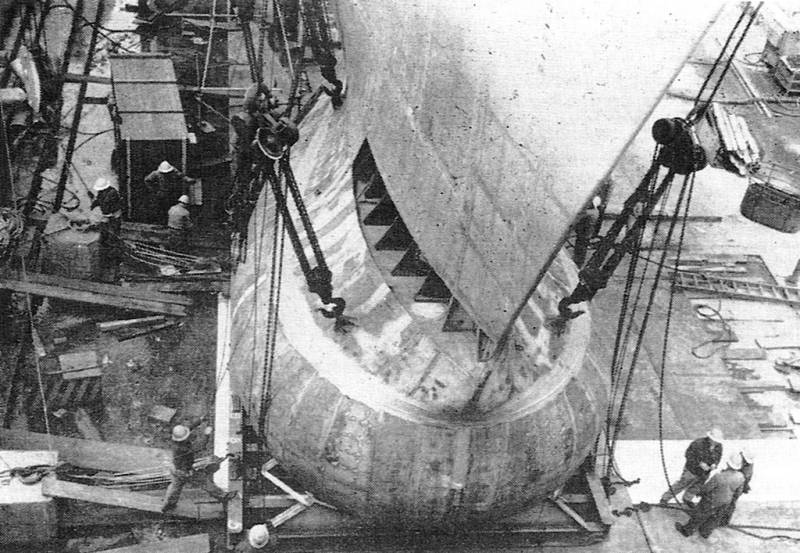
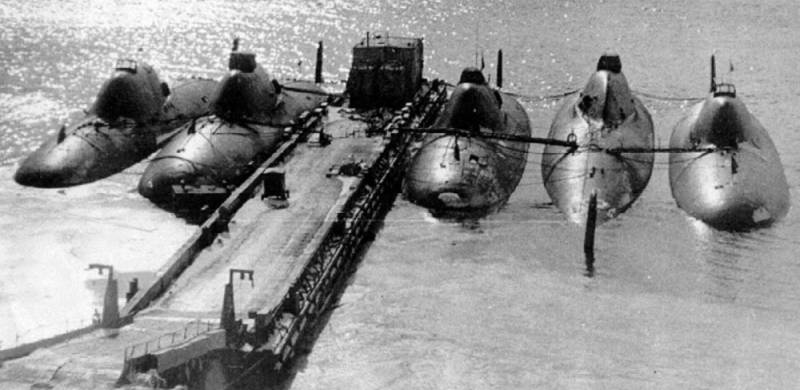
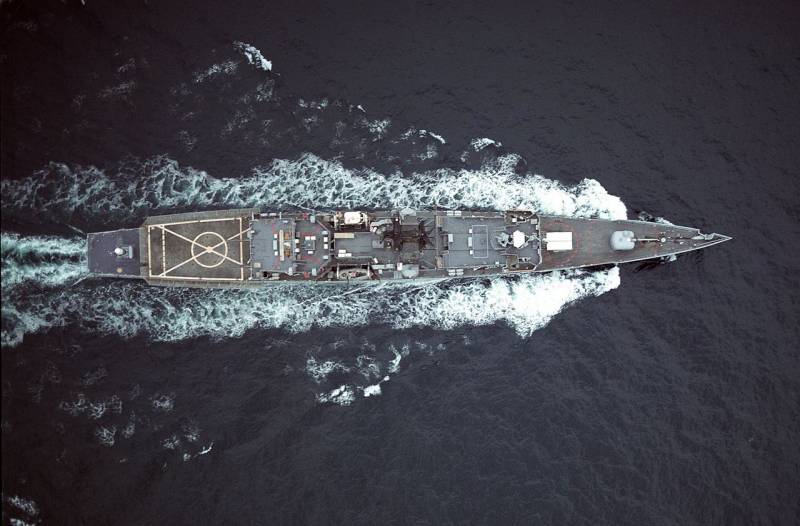
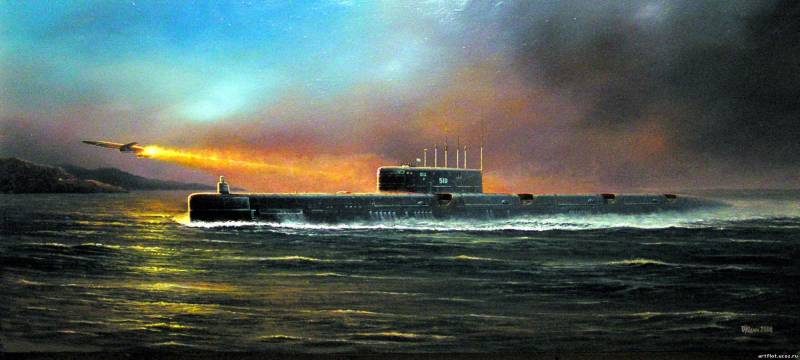
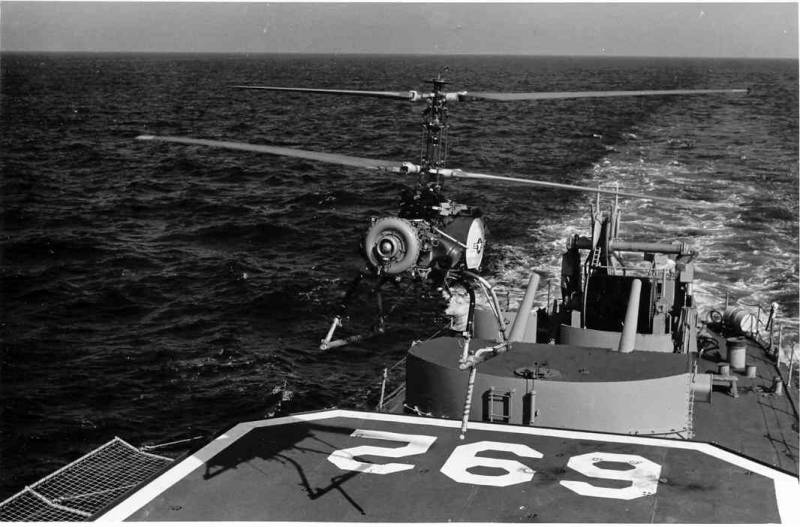
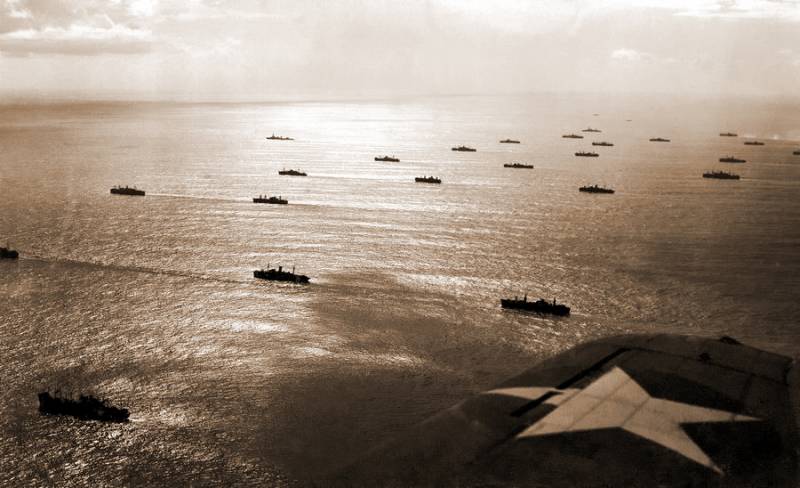
Information